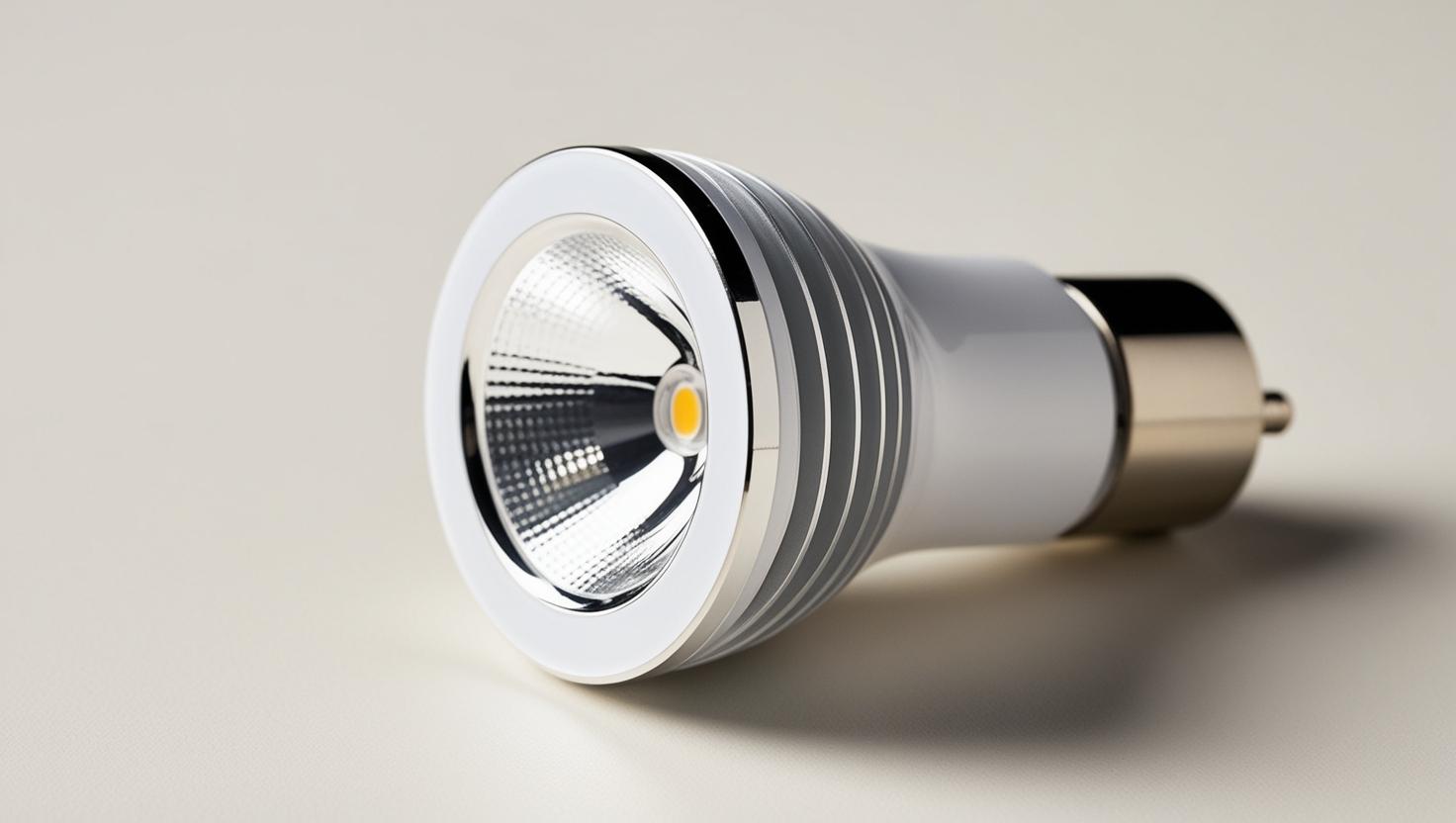As businesses seek to lower energy bills and improve sustainability, energy-efficient lighting is becoming essential for commercial buildings. With a focus on energy efficiency, commercial spaces are adopting modern lighting technologies such as LEDs and smart lighting systems, which use considerably less energy than traditional lighting, minimising a company’s carbon footprint.
In this guide, we’ll explore the main advantages of energy-efficient lighting in offices and other commercial buildings and look at the most common types of energy-saving lighting.
For innovative, energy-saving commercial lighting installation and maintenance in Sussex, Surrey, and London, contact our team at Cooper Weston. We are fully qualified electrical contractors with high standards of expertise and professionalism.
What is energy-efficient commercial lighting?
Energy-efficient commercial lighting refers to lighting systems designed to use less energy while providing adequate or improved illumination in commercial settings such as offices, warehouses, and retail spaces.
These lighting solutions typically use modern technologies, such as:
- LEDs (Light Emitting Diodes)
- CFLs (Compact Fluorescent Lamps)
- Smart lighting controls
These consume significantly less electricity than traditional incandescent or fluorescent bulbs.
Advantages of energy-efficient commercial lighting
Making informed choices about your building’s infrastructure can offer significant financial and environmental benefits. Let’s explore the key advantages of energy-efficient lighting and why it’s a good investment for any business.
1. Cost savings on energy bills and maintenance
Switching to energy-efficient lighting, such as LEDs, significantly reduces energy consumption compared to traditional lighting systems. LEDs use up to 75% less energy than incandescent or fluorescent bulbs, resulting in lower electricity bills for commercial buildings. This reduction in energy usage translates into immediate and long-term cost savings, making energy-efficient lighting a smart financial decision.
Energy-efficient lighting also has a longer lifespan than traditional options, requiring less frequent replacement and maintenance. This leads to additional savings on maintenance costs and reduces disruptions to business operations.
2. Improved lighting quality and employee productivity
Energy-efficient lighting, especially LEDs, offers better light quality, providing brighter and more consistent illumination than traditional bulbs. This improved lighting enhances visibility, creating a more comfortable and productive work environment for employees.
Energy-efficient lighting can also be adjusted for brightness and colour temperature to suit different tasks or areas within the building, positively impacting employee productivity and overall well-being by reducing eye strain and fatigue.
3. Environmentally friendly and sustainable option
Energy-efficient lighting significantly reduces a building’s carbon footprint by consuming less electricity and generating lower greenhouse gas emissions. These lighting systems also have a longer lifespan, resulting in less frequent replacements and reduced landfill waste.
It’s worth noting that many energy-efficient lighting options are made from more environmentally friendly materials and are easier to recycle than traditional bulbs. For example, LEDs contain fewer hazardous substances, such as mercury, making their disposal less environmentally harmful.
4. Compliance with regulations and certifications
Installing energy-efficient lighting helps commercial buildings meet increasingly stringent energy regulations and building codes. Many governments and local authorities now require businesses to adhere to standards that promote energy efficiency and reduce carbon emissions.
Upgrading to efficient lighting solutions also contributes to achieving green building certifications like LEED (Leadership in Energy and Environmental Design) or BREEAM (Building Research Establishment Environmental Assessment Method). These certifications demonstrate a commitment to sustainability and can enhance a company’s reputation and attract environmentally conscious clients or tenants, adding value to the building.
5. Smart lighting and automation
Smart lighting systems integrate advanced technologies like sensors and automation to optimise energy use in commercial buildings. These systems can automatically adjust lighting based on occupancy, dimming or turning off lights in unoccupied areas to reduce unnecessary energy consumption. Features such as daylight harvesting allow smart lighting to respond to natural light levels, adjusting indoor lighting accordingly to maintain optimal brightness without wasting energy. Smart lighting can also be controlled remotely and programmed to follow schedules, further enhancing efficiency.
By adopting automation, businesses can significantly lower energy costs while improving convenience and operational efficiency.
Our energy-saving services for commercial buildings
Common types of energy-efficient lighting available for commercial spaces
The most common types of energy-efficient lighting for commercial spaces include:
- LED (Light Emitting Diode) Lights: LED lights are the most popular and widely used energy-efficient lights. They consume up to 75% less energy than incandescent bulbs, have a much longer lifespan, and provide high-quality illumination. LEDs are versatile and can be used for various applications, from office spaces to industrial areas.
- CFL (Compact Fluorescent Lamps): CFLs are another alternative to traditional incandescent lighting with good energy efficiency. They use about 70% less energy and last longer than incandescent bulbs, though not as long as LEDs. CFLs are suitable for areas where lighting is needed for extended periods, like hallways or communal spaces.
- T5 and T8 Fluorescent Tubes: These fluorescent tubes are commonly used in commercial and industrial environments, offering better energy efficiency than older fluorescent tube technologies. T5 and T8 lamps provide a good balance between energy savings and light output, making them ideal for large spaces such as offices, warehouses, or retail spaces.
- Smart Lighting Systems: Smart lighting combines energy-efficient bulbs (like LEDs) with advanced controls such as sensors, dimmers, and automation. These systems maximise energy efficiency by automatically adjusting lighting levels according to occupancy and natural light.
These lighting options provide various solutions depending on the needs of your commercial space, helping to significantly reduce energy consumption and costs.
Upgrade your commercial lighting with Cooper Weston
Environmentally, energy-efficient lighting reduces your building’s carbon footprint, supports sustainability goals, and helps ensure compliance with regulatory standards and green building certifications like LEED or BREEAM.
Contact Cooper Weston today for expert advice on lighting design, installation, maintenance, and repair. Our commercial lighting installers are all fully qualified and professional and deliver the highest standards of customer care.
Our tailored services will help you maximise energy efficiency, improve energy performance and ensure your lighting system is cost-effective.
Commercial lighting energy efficiency FAQs
How much can I save by switching to energy-efficient lighting in my commercial building?
Switching to energy-efficient lighting, such as LEDs, can significantly reduce energy bills. On average, LED lighting uses up to 75% less energy than traditional incandescent or fluorescent bulbs, meaning your commercial building could immediately reduce electricity costs. Over time, these savings can add up, with businesses typically saving anywhere from 30% to 60% on their lighting expenses.
The longer lifespan of energy-efficient bulbs means fewer replacements and lower maintenance costs. LEDs, for instance, can last up to 25 times longer than incandescent bulbs, reducing the need for frequent replacements and minimising disruption to operations. Savings will depend on factors like the size of your building, the type of lighting being replaced, and how often your lights are in use, but the return on investment is typically high for most commercial spaces.
How does energy-efficient lighting improve employee productivity?
Energy-efficient lighting, particularly LEDs, provides brighter and more consistent illumination, improving workplace visibility and comfort. Poor lighting can lead to eye strain, headaches, and fatigue, negatively impacting focus and productivity. In contrast, high-quality lighting reduces these issues, helping employees stay more alert and engaged throughout the day.
Energy efficiency lighting options often come with adjustable brightness and colour temperature settings. This allows businesses to customise the lighting to suit different tasks or times of day, creating an optimal working environment. For example, cooler, brighter lighting can help improve concentration in offices, while warmer lighting can create a more relaxing atmosphere in break areas.
Can energy-efficient lighting be installed in older commercial buildings, or is it only for new construction?
Yes, energy-efficient lighting can be installed in older commercial buildings. Upgrading the lighting in existing buildings is one of the most cost-effective ways to improve energy efficiency. Retrofitting older buildings with modern lighting systems is relatively straightforward and can significantly reduce energy consumption without requiring extensive renovations.
These upgrades can be customised to work with the building’s existing electrical infrastructure, making them practical solutions for older structures. This can help reduce energy bills, improve lighting quality, enhance the building’s overall performance, and align it with modern energy efficiency standards and regulations.
To learn more about our work, please view our case studies.







